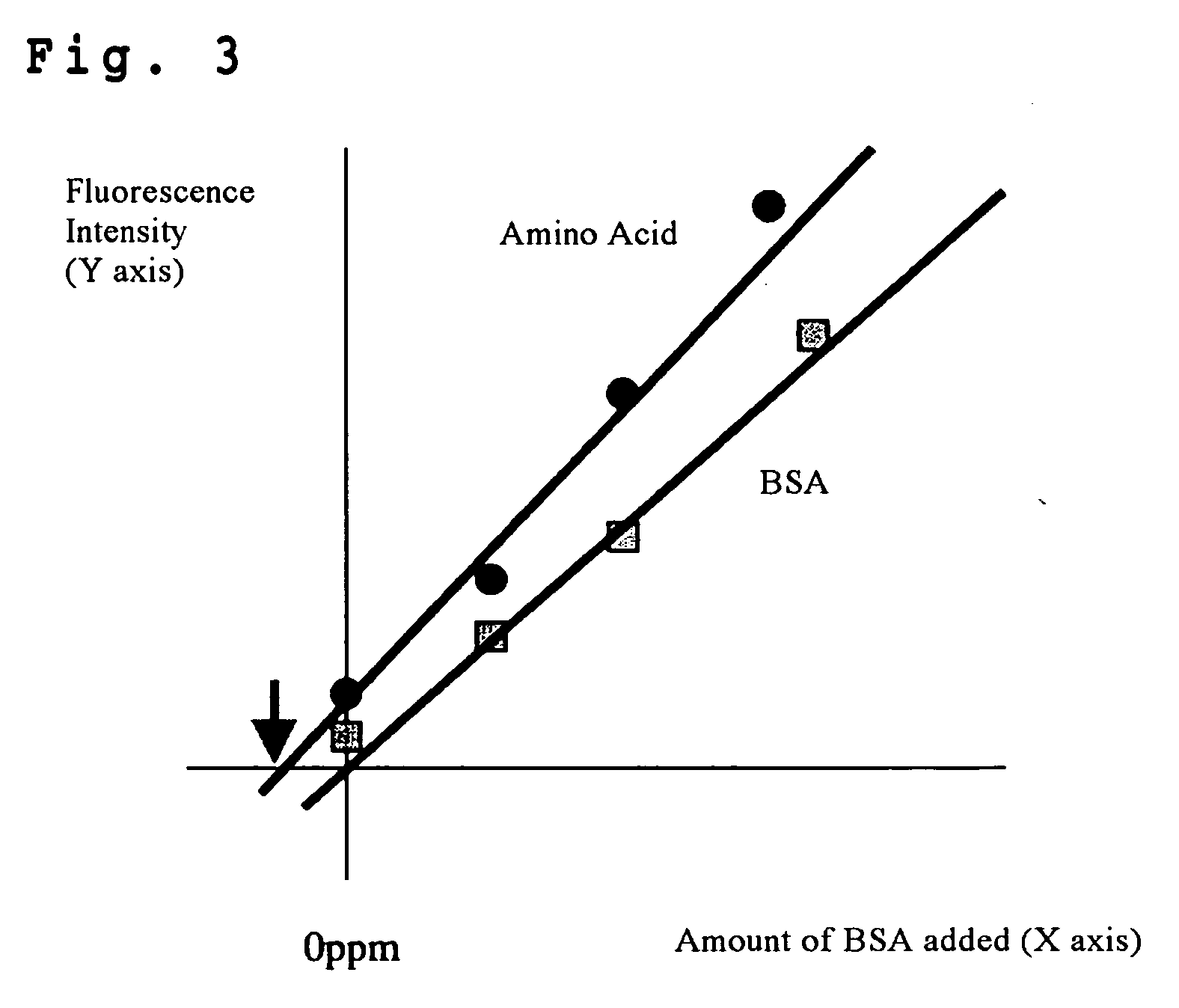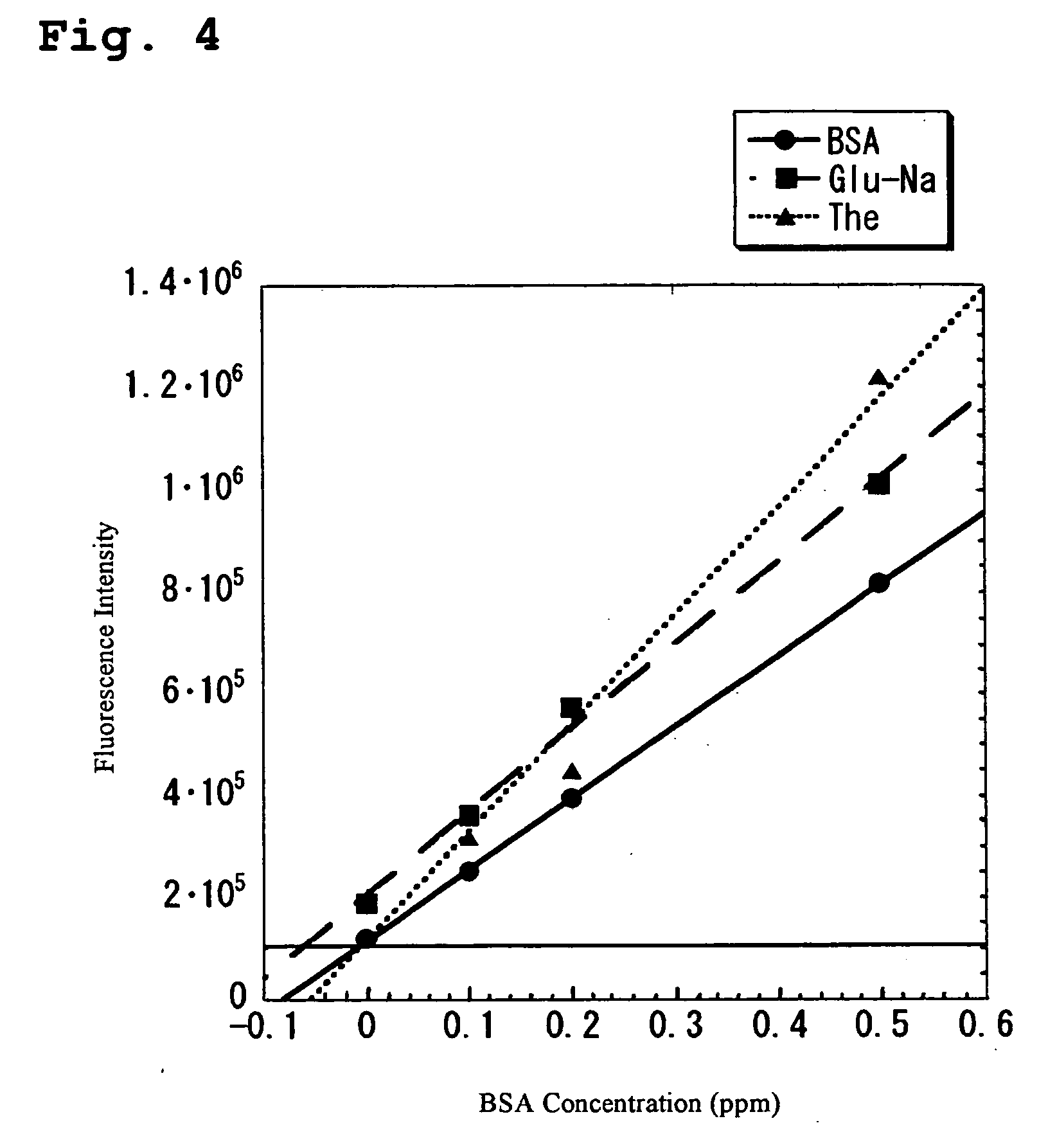Method of analyzing protein
a protein and protein technology, applied in the field of protein analysis, can solve the problems of low selectivity of soybean protein in this method, no guarantee that all allergens will be detected, and the recent increase in problems, and achieve the effect of high reproducibility and high sensitivity
- Summary
- Abstract
- Description
- Claims
- Application Information
AI Technical Summary
Benefits of technology
Problems solved by technology
Method used
Image
Examples
example 1
Quantification of Protein in Food Additives, Such as Amino Acid Supplements
[0049] Devices: The following devices are used.
[0050] Micro-96-well simultaneous filtration apparatus (Atto's AE-6190 Model); Fluorescent image analyzer (Amersham Biotech's Fluor Imager 595 or Tyhoon 8600); PVDF membrane (Millipore's PVDF SEQUENCING MEMBRANE, Immobilon-PSQ); Shaker (Tokyo Rika's MULTI-SHAKER MMS); Clean draft (manufactured by Yamato Kagaku);
[0051] Aspirator; Poly-messflask (100 ml); Siliconized Eppendorf-tube (1.5 ml); Siliconized chips (250, 1000 μl); and Micropipetter.
[0052] Reagents: The following reagents are used.
[0053] Fluorescent staining solution (Molecular Probe's Ruby protein blot stain, 200 ml bottle); BSA preparation (Sigma's PROTEIN STANDARD 1000 ppm); Hydrochloric acid (Kanto agaku's ultra-high-purity reagent, 250 ml bottle); Acetic acid (Junsei Kagaku's special grade reagent, 500 ml bottle); and Methanol (manufactured by Junsei Kagaku, for high-performance liquid chromatog...
example 2
Molecular Weight Range of Detectable Protein
[0139] Proteins having a large molecular weight become allergens easily, and such high-molecular-weight proteins are readily detected in ELISA. Alternatively, even proteins having a lower molecular weight may become allergens, so it is desirable that proteins and peptide having a lower molecular weight be able to be detected with high sensitivity. According to the method of the present invention, proteins having a varying molecular weights, i.e., BSA (66 kDa), lysozyme (14 kDa), ubiquitin (8.6 kDa), insulin (5.7 kDa) and oxidized insulin B chain (3.5 kDa), were tested for the minimum limit of detection and the quantification ability thereof. In place of BSA in Example 1, each protein was suitably diluted and its calibration curve was formed according to the dot blotting-fluorescence staining method. As a result (see FIG. 5), all proteins had calibration curves of high linearity, and their minimum limit of detection was 0.1 ppm (but the mi...
PUM
 Login to View More
Login to View More Abstract
Description
Claims
Application Information
 Login to View More
Login to View More - R&D
- Intellectual Property
- Life Sciences
- Materials
- Tech Scout
- Unparalleled Data Quality
- Higher Quality Content
- 60% Fewer Hallucinations
Browse by: Latest US Patents, China's latest patents, Technical Efficacy Thesaurus, Application Domain, Technology Topic, Popular Technical Reports.
© 2025 PatSnap. All rights reserved.Legal|Privacy policy|Modern Slavery Act Transparency Statement|Sitemap|About US| Contact US: help@patsnap.com



